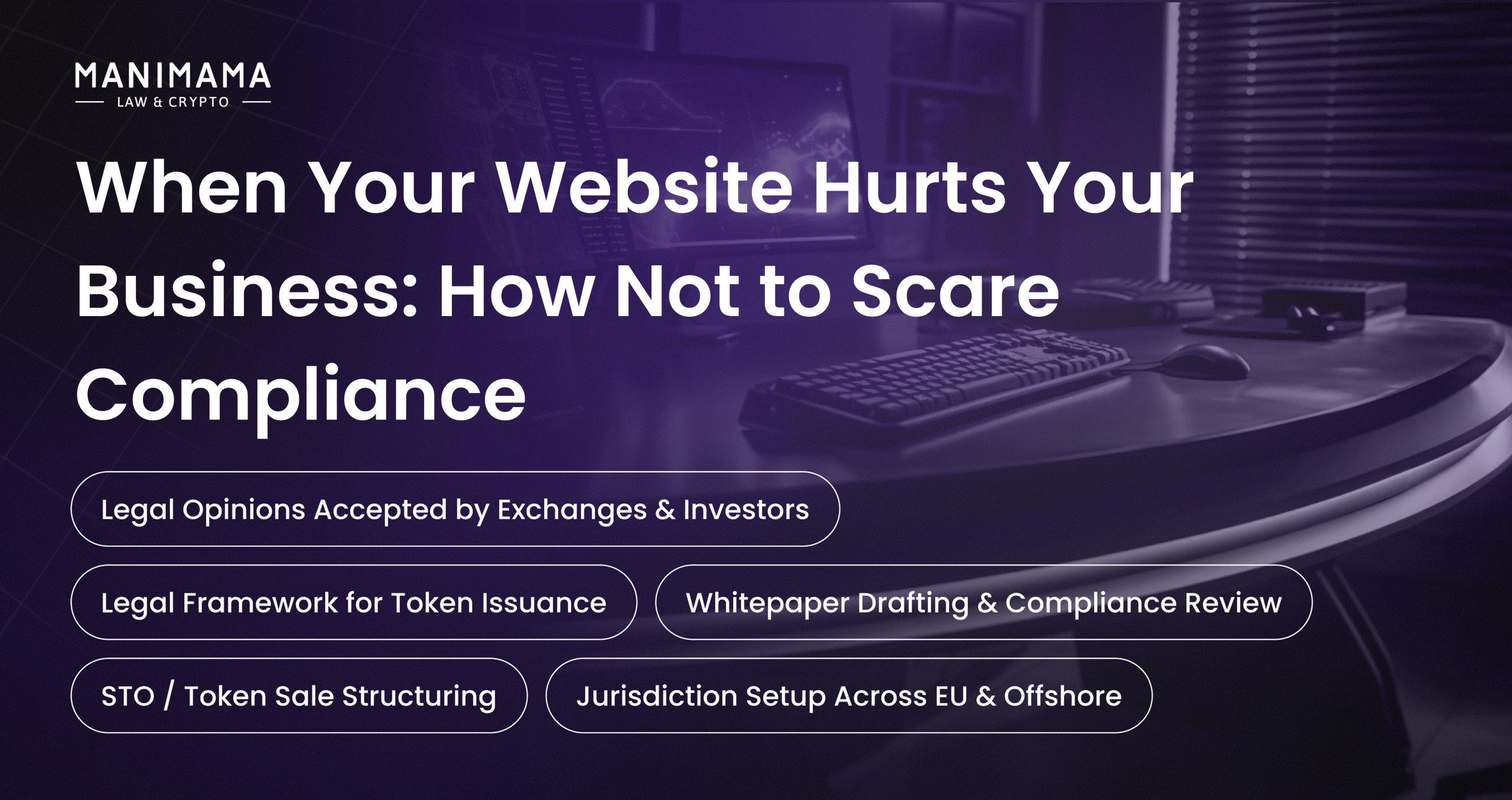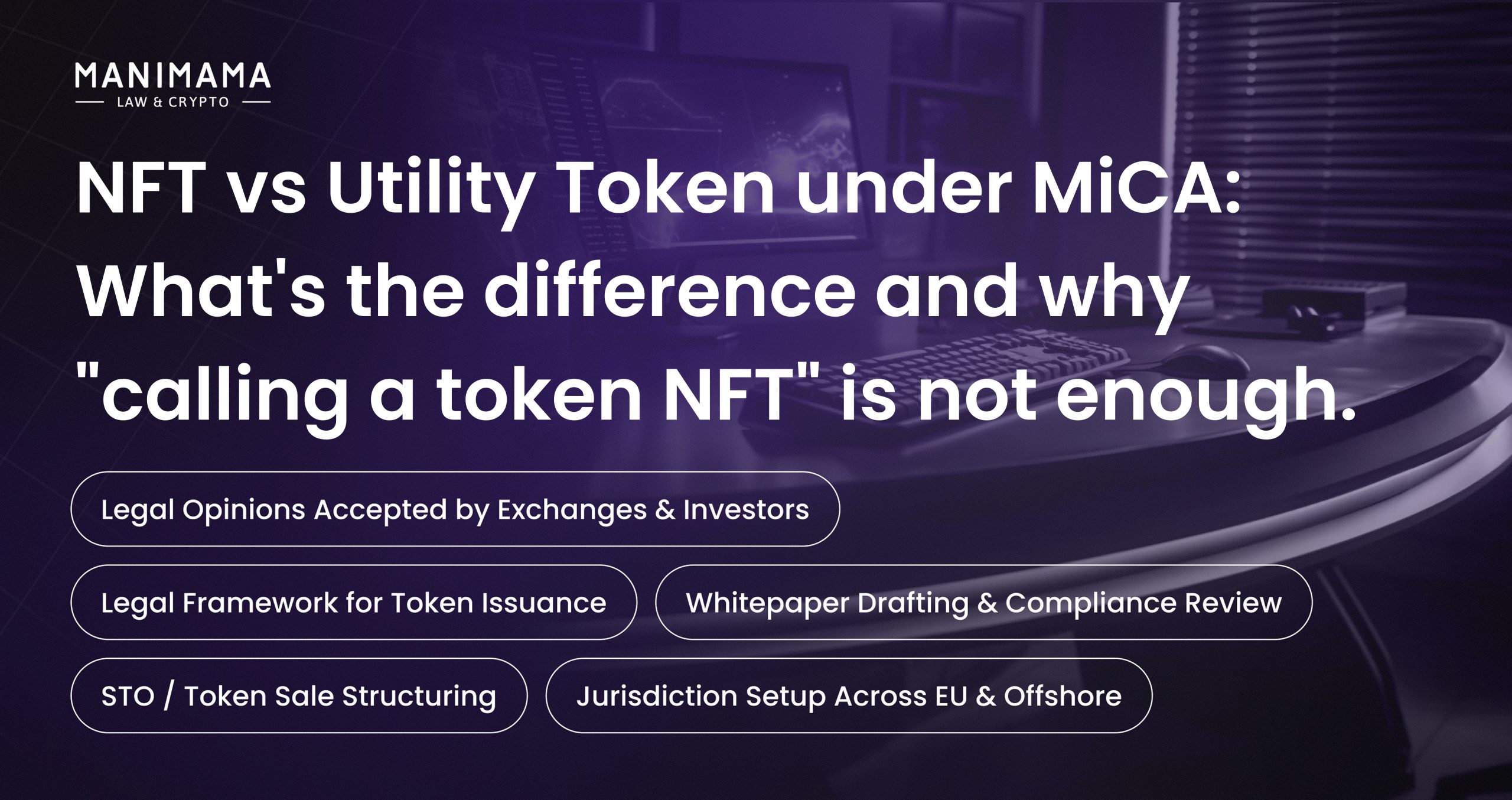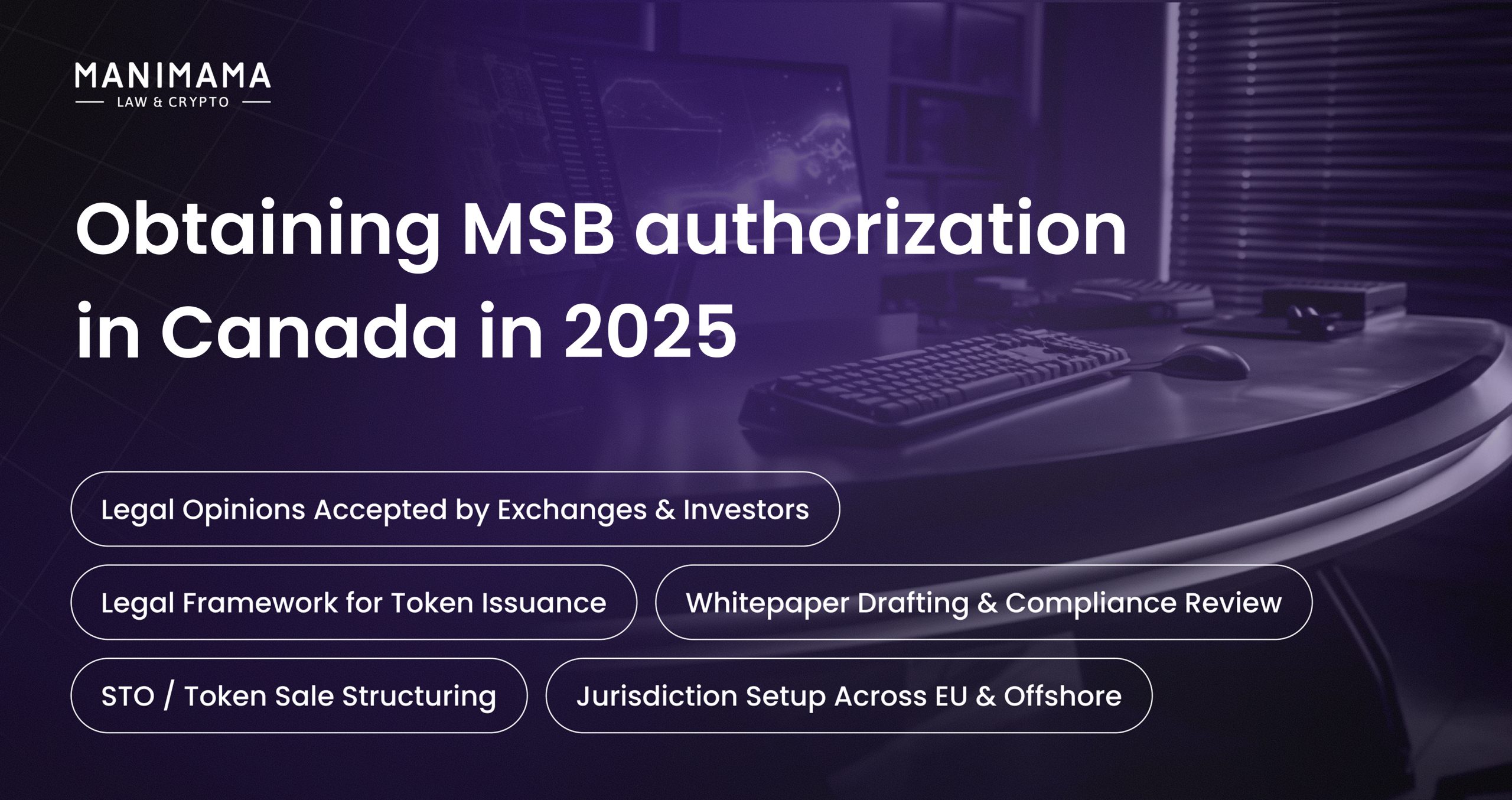A company’s website is not just a business card or a marketing tool. It is the first source of information reviewed by a bank, regulator, or potential partner when assessing your business. That’s why the way your website is designed, the information it contains, and how clearly it reflects your company’s structure often determine not only your image but also the success of compliance checks.
However, in practice, we often see that many clients underestimate the importance of their website as a key communication channel between the business and the outside world. Very often, websites contain incomplete, outdated, or legally inaccurate information — incorrect company details, vague descriptions of activities, missing policies, or no mention of licenses. As a result, banks may become suspicious, regulators send additional requests, and account openings get delayed.
In this article, we will highlight the most common website mistakes that affect compliance, explain why they matter, and provide straightforward, actionable recommendations to help your website become an asset for compliance rather than a risk.
In our practice, the process of reviewing a client’s website follows a clear and thorough approach. Before presenting a website to a regulator, partner, bank, EMI, or any other institution that requests it, we conduct a comprehensive analysis. This means examining every single element of the site — identifying even the smallest inconsistencies or potential red flags. After all, any compliance officer from any organization will do exactly the same.
When such a review reveals flaws or gaps on a client’s website, it immediately raises questions about the company’s overall attitude toward its business. If a website — the face of the company — is poorly structured, inaccurate, or outdated, it inevitably casts doubt on how the rest of the business is managed.
To help you identify and address potential weaknesses, we will first outline the most common website issues we encounter. Each will be examined in detail—highlighting why they matter for compliance and how you can resolve them.
Incorrect Website Title (Tab Name)
One of the most common yet overlooked issues is an incorrect or generic website title — the text displayed on the browser tab. In such a case, the tab reads “Domen Provider Company Name” instead of the actual name of the client’s product or company.
From a compliance and branding standpoint, this detail is far from trivial. The title tag is often the first element that appears in a regulator’s or partner’s browser when they access the website. If it doesn’t clearly identify the company or product, it can create confusion or even raise doubts about the business’s professionalism and legitimacy.
A properly configured title should include the official company or product name, optionally followed by a short and accurate descriptor (e.g., “FinPay5378 — Licensed Payment Platform” or “Nova123 OÜ | Official Website”). This not only strengthens brand consistency but also ensures transparency — a critical factor in any due diligence or compliance review.
Missing Legal Entity and License Information
A critical compliance issue — especially for regulated businesses — is the absence of any reference to the company’s legal entity and license on the website. For companies operating under a license (such as financial, EMI, crypto, or investment service providers), this omission immediately raises red flags during any compliance review.
When a regulator, partner, or bank visits a website and cannot easily verify which legal entity operates the business or whether it holds a valid license, it creates the impression of opacity and potential non-compliance. From a due diligence perspective, this is often interpreted as either negligence or an attempt to conceal regulatory status — both of which can delay or block onboarding.
Every licensed business should clearly state its legal entity name, registration number, and licensing authority on the website, both in the footer and in a dedicated “About” or “Legal Information” section. Add a direct link to the public register (such as the FIU or FCA), making this information instantly accessible to verify ownership and license. Taking these steps enhances your credibility with compliance teams and institutional partners.
Non-Compliant or Poorly Drafted Website Policies
Another frequent and serious issue concerns the quality and credibility of the website’s legal policies — such as the Privacy Policy, Terms of Use, and Cookies Policy. These documents are often the first materials reviewed by EMIs, banks, and exchanges when evaluating a company’s compliance readiness.
In many cases, however, the policies presented on client websites are formatted unprofessionally, written in vague or generic language, or clearly generated by artificial intelligence without legal adaptation. Such documents are instantly recognizable to compliance officers and can result in immediate rejection during the account opening or due diligence process. They signal a lack of understanding of regulatory obligations and undermine trust in the business’s operational standards.
To avoid this, all website policies must be: (1) carefully reviewed; (2) rewritten to align with the company’s jurisdiction, licensing requirements, and business model; and (3) localized as necessary. Ensure that each policy text explicitly states the entity’s name, licensing authority, and applicable laws. Always keep the “Last Updated” date current to demonstrate active maintenance and current compliance status.
Broken or Irrelevant Social Media Links
Inactive or non-functional social media buttons are another common weakness that negatively affects both compliance perception and brand credibility. When the website displays icons for platforms like LinkedIn, Facebook, or X (Twitter), but these links either do not work or lead to empty or inactive pages, it immediately raises questions about the authenticity and professionalism of the company.
From a compliance standpoint, this creates inconsistency between the company’s declared digital presence and its actual online footprint — something that compliance officers, banks, and regulators routinely verify. Broken or inactive profiles can suggest that the company exists only “on paper” or that its operations are dormant, which can seriously undermine trust during onboarding or partnership checks.
If active, professional social media accounts are not maintained, remove such links and keep only reliable contact details, such as a business email or a contact form. Ensure all displayed social links lead to current, regularly updated accounts. Use social links only if they support your credibility and digital footprint.
Missing Information About Shareholders and the Management Team
A well-structured “About Us” section is more than a formality — it is one of the key elements regulators, banks, and partners review to understand who stands behind the business. When a website lacks information about the company’s shareholders, founders, or management team, it creates a perception of anonymity and reduces trust in the project.
Compliance officers and due diligence teams consistently seek transparency in ownership and governance. They want to see the names, positions, and professional backgrounds of individuals who control or manage the company. This information helps confirm that the business is legitimate, competently managed, and not a front for undisclosed entities or high-risk individuals.
For that reason, the “About Us” section should include:
- Shareholders and key management profiles (names, roles, relevant professional experience);
- Brief career or sector background, highlighting qualifications and reputation;
- Photos or LinkedIn links, if appropriate for the industry.
This approach demonstrates openness, builds credibility, and allows both clients and institutional partners to understand who is responsible for the company’s operations. In other words, your clients — and regulators — should clearly see who stands behind the service.
Unclear Client Onboarding and Cooperation Process
The “Get Started” button plays a key role in user interaction — it is the moment when potential cooperation begins. However, if clicking this button only leads to a short form where users submit their details and are told to “wait for a reply,” it leaves both potential clients and compliance officers uncertain about what happens next.
Compliance experts will want to understand what exactly follows after the submission: whether there is an internal verification step, a contract-signing process, or a defined client onboarding framework. When the process isn’t described, it gives the impression of an undefined or immature business model, which can undermine trust.
To prevent this, it is essential to clearly outline the process for cooperation after a request is submitted. A short description of the onboarding stages can be included either directly below the form or in the FAQ section. Explaining the process — even briefly — helps both partners and potential clients understand that the company operates in a structured, transparent, and professional manner. This reinforces credibility and shows that the business has well-organized internal procedures, which is essential for successful compliance evaluation.
Missing Information About Products and Partners
Another element that significantly influences the perception of credibility is the absence of detailed information about the company’s products, services, and business partners. A website that fails to clearly explain what exactly the company offers and with whom it cooperates often appears incomplete or even suspicious to compliance officers, regulators, and potential clients.
From a compliance perspective, transparency about partnerships — particularly with licensed entities such as cryptocurrency exchanges, payment institutions, or KYC/KYT service providers — serves as strong evidence of the company’s legitimacy and reliability. Mentioning cooperation with recognized, regulated organizations signals that your business operates within the framework of established standards and maintains relationships that have already passed due diligence.
Including references to well-known partners or major clients also plays a crucial role in enhancing reputation. It demonstrates that other serious market players have trusted your company, which immediately raises confidence among banks, EMIs, and potential users. Even brief mentions, such as “In cooperation with licensed European cryptocurrency exchanges” or “KYC/KYT services powered by [provider name],” are enough to strengthen the perception of transparency, professionalism, and maturity of the business.
False, Contradictory, or Legally Questionable Information
Finally, one of the most serious — yet sometimes overlooked — problems is the presence of false, inconsistent, or misleading information on the website. Any detail that contradicts previously submitted data (to regulators, banks, or partners) or even hints at activities that could be interpreted as illegal or unlicensed can instantly destroy trust and halt any compliance process in its tracks.
Compliance officers carefully compare the data presented on the website with the documents provided during verification, including registration details, licensing scope, geographic presence, and business model descriptions. If the website claims, for instance, that the company provides services outside its licensed scope, operates in restricted jurisdictions, or cooperates with entities under sanctions, this becomes a red flag for regulators and financial institutions. Even seemingly minor inconsistencies — such as differing legal names, alternative service descriptions, or exaggerated claims — can trigger suspicion and additional scrutiny.
A company’s website must therefore remain a truthful, accurate, and legally sound reflection of its operations. Every statement, claim, and description should align with the company’s official documentation and regulatory approvals. Transparency and consistency not only protect against compliance issues but also build long-term credibility with partners, regulators, and clients — the kind of trust that cannot be faked or generated by design.
A company’s website is not just part of its online presence — it is a vital instrument of trust. It forms the first impression for banks, regulators, partners, and clients, showing how professional, transparent, and law-abiding your business truly is. A properly structured website demonstrates that the company understands its legal obligations, complies with regulatory standards, and maintains a clear governance framework. Conversely, even minor flaws — from an incorrect company name to missing license details — can undermine credibility and, in some cases, prevent cooperation with financial institutions altogether.
However, there is no need to worry. Even if your website does not yet meet all the standards described above, the legal team at Manimama Law Firm is ready to assist. We will conduct a comprehensive audit of your website, identify all weaknesses and compliance risks, and prepare detailed recommendations or make the necessary adjustments for you. Contact us — and your website will become not a compliance obstacle, but your strongest proof of transparency and trustworthiness.










